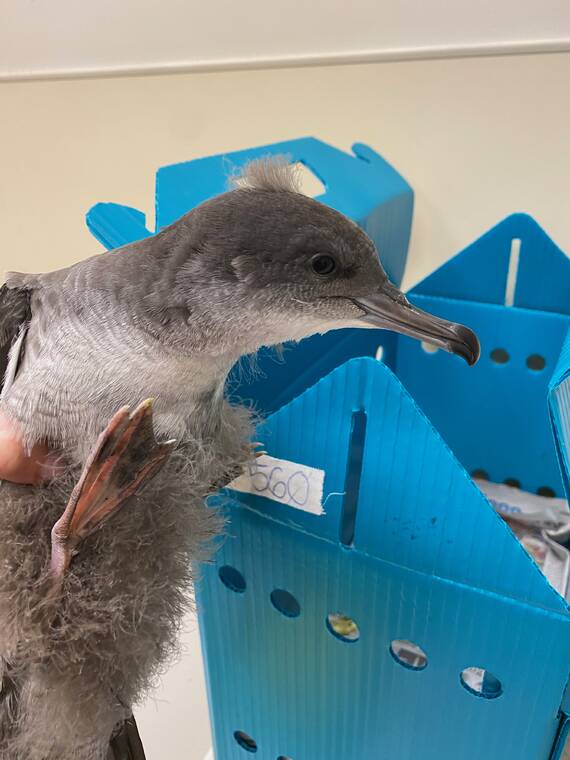Seabird fallout season begins in Hawaii

COURTESY HAWAII WILDLIFE CENTER
A fledgling wedge-tailed shearwater rescued from the ground on Oahu during fallout season last year.
Seabird fallout season is underway, and the Hawaii Wildlife Center is once again helping to get fallen fledglings back in the air again.
The peak fallout season for young wedge-tailed shearwaters, or uau kani, is from November to December, but the season begins mid-September, and some are already in need of rescue. This morning, the center responded to a call for a shearwater on the 22nd floor of a building in Waikiki.
The Hawaii Wildlife Center, a nonprofit based on the island of Hawaii, has for several years sent a team of specialists to Oahu to help hundreds of the native seabirds survive peak fallout season by rehabilitating and releasing them back into the wild.
This year, the team will be on Oahu for the fifth season in a row from Nov. 15 to Dec.12.
During winter months, young seabirds rely on the light of the moon to guide them on inaugural flights from their burrows out to sea, but become disoriented by artificial lights. Many end up circling artificial light sources, then drop from exhaustion or collide with structures. Once down, they become highly vulnerable to predators, starvation, or getting hit by a car.
The majority of fledglings are evaluated and released within a few days, but some need long-term care due to more serious injuries at the center’s main hospital in Kapaau on Hawaii island.
Don't miss out on what's happening!
Stay in touch with breaking news, as it happens, conveniently in your email inbox. It's FREE!
While some adults suffer from fallout, the majority are fledglings no larger than the palm of one’s hand, with varying amounts of fluff on them.
The Hawaii Wildlife Center asks the public to keep an eye out for the downed shearwaters during fallout season. If anyone sees one, they can help by picking it up, putting it in a ventilated box, and dropping it off at the following locations:
>> Feather and Fur Animal Hospital, 25 Kaneohe Bay Drive, No. 132 in Kailua, available 24 hours.
>> Hawaiian Humane Society, 2700 Waialae Ave. in Honolulu, available from 7 a.m. to 7 p.m. daily.
>> James Campbell National Wildlife Refuge, 56-795 Kamehameha Highway in Kahuku, available from 8 a.m. to 4 p.m. Monday through Friday.
For more information or help with bird identification, contact the Hawaii Wildlife Center at birdhelp@hawaiiwildlifecenter.org or call 884-5000. To learn more about the Oahu Seabird Aid program, visit this link Opens in a new tab.




